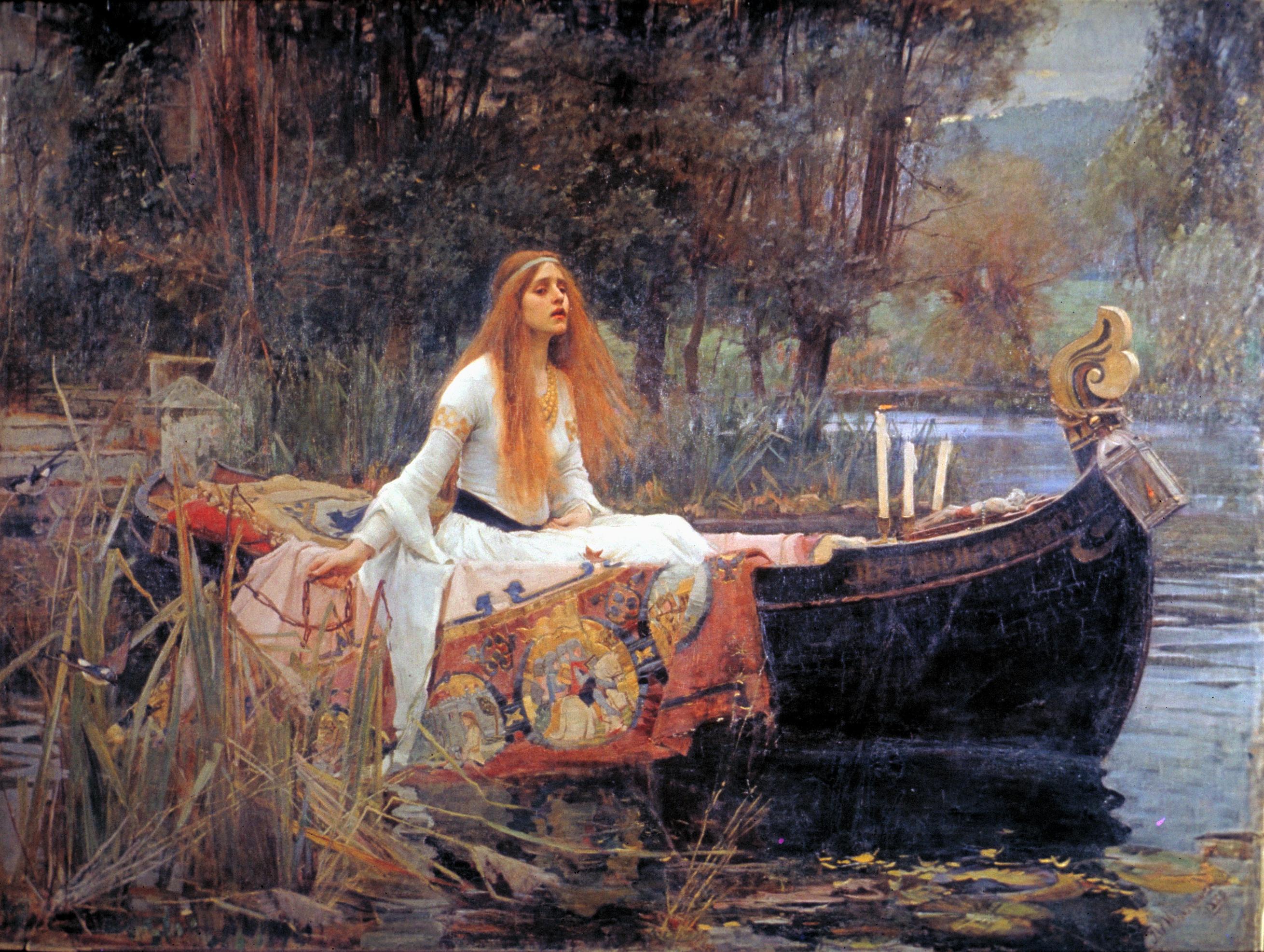Always, the touch of his hand
on mine, is unforeseen
as if he had just rounded
as if he had just rounded
the river’s bend and
caught me between
a rock and a hard place.
And with his touch
I am reminded
that wild water lilies just
appear - to float upon a peerless mirror
in truth, they are rooted in the earth below
and pierce the pond . . .
I am lifted from the tangle of reflection,
and the rolling ripples of thought
to which I have confined myself
and, happily, return to the real world:
to which I have confined myself
and, happily, return to the real world:
Triumphant Lady of Shalott.

note: The Lady of Shalott is a mythic character who
lives by herself in a castle, on an island upstream from Camelot. She is tasked
with looking at the world outside in a mirror, and to weave what she sees into
a tapestry. She is forbidden to look at the outside world directly. One day,
she sees the reflection of Sir Lancelot riding by. Although she knows that it is forbidden, she
looks out the window at him. The mirror shatters, the tapestry flies away
in a tempestuous wind and, in the ensuing storm, the lady leaves her castle,
finds a boat, and drifts down the river to Camelot, where she dies.
The Lady of Shalott is one of Tennyson's most enduring poems and the story was illustrated in several paintings – the most popular being by John William Waterhouse in 1888. The story is, of course, loaded with symbolism. Agatha Christie wrote a Miss Marple Mystery entitled "The Mirror Crack'd From Side to Side", which I read and loved. (where movie star, Marina Gregg is seen with a "frozen" look on her face likened to the Lady of Shalott, as though "doom has come upon her"). And novelist Jessica Anderson wrote Tirra Lirra by the River (which I haven’t yet read) but which is the story of a modern woman's decision to break out of confinement.
photos: Wild Water Lilies – W. Bourke
The Lady of Shalott, by John William Waterhouse, public domain.
© 2014 Wendy Bourke


I like the triumphant end as opposed to the doomed one! Smiles. I enjoyed this escape and return to the real world. And now I am itching to read the Agatha book again too.
ReplyDeleteit's better to face the challenges of the real world and die in the attempt than to live a passive life...I really love the twist at the end...she was triumphant indeed...
ReplyDeleteintriguing...how sad a life to always have to settle for the facimile of life and never see the real one...the separation would drive me rather mad i think....
ReplyDeletelovely poem and painting, a while back I too had written a poem on this painting:)
ReplyDeleteAlways enjoy reading your comments on my poetry blog, Vandana. Thank you for visiting. The Lady of Shalott poem by Tennyson and the incredible John William Waterhouse painting (illustrated here) appear to have provided both of us with poetic inspiration. (Well, both pieces are the stuff of pretty incredible creative synergy – wonderful masterpieces!) Loved the way that you worked The Lady’s songs into your poem. (I couldn’t quite seem to get that working.) She was, indeed, lost and certainly in an impossible place. You captured that well - and in a sestina, no less.
DeleteI had not read the myth, and of course we all want to rewrite it for today. What a prison indeed to have to look through everything through a mirror.. I think i remember that story by Agatha Christie though.... Myths can be such inspirations to poetry ..
ReplyDeleteThere is a lot to REFLECT on in your poem, Wendy! Nicely penned.
ReplyDeleteThanks for illuminating us here, Wendy. And I'm glad you're able to return triumphant!
ReplyDelete